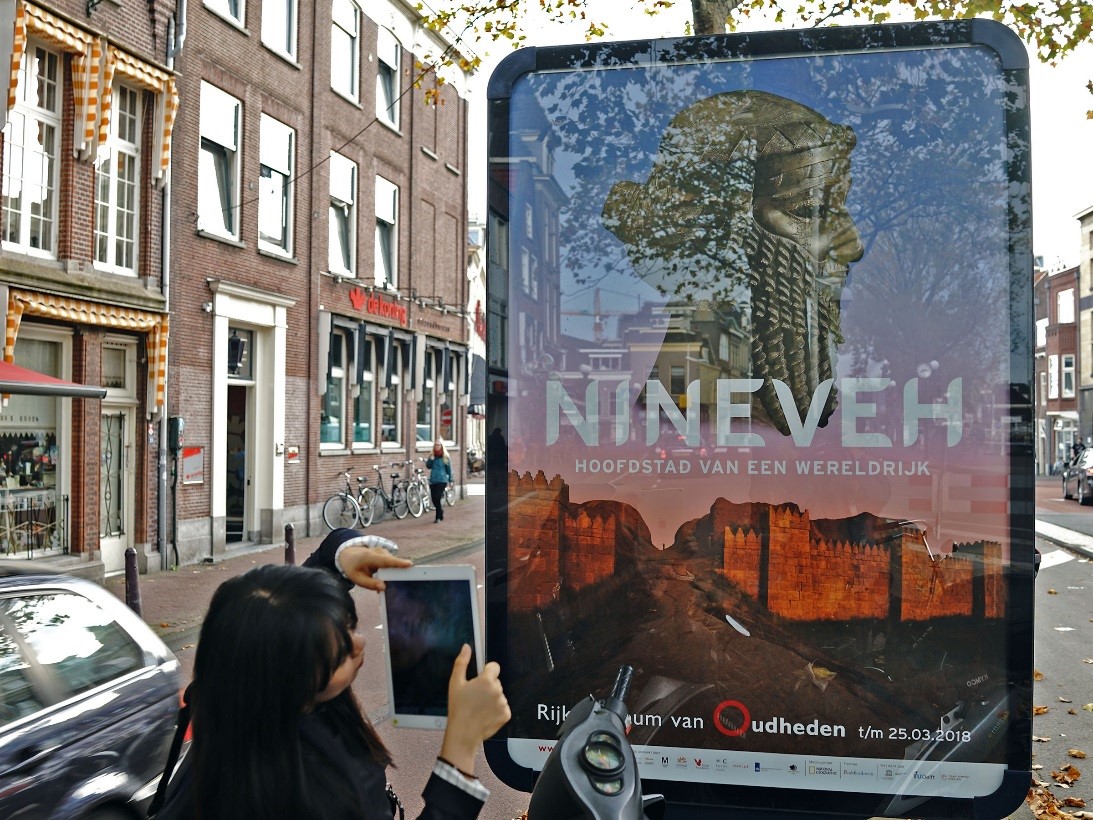オランダ国立古代博物館『ニネヴェ展』への参加The exhibition “Nineveh” at the National Museum of Antiquities
November 10, 2017
[:ja]オランダのライデンにある国立古代博物館は、2018年に創立200周年を迎える、歴史の古い名門博物館です。現在、200周年に関連した記念イベントとしてニネヴェ展(2017.10.20~2018.03.25)が開催されており、東京藝術大学からは2名が、10月19日のオープニングレセプションに招待され出席しました。
古代アッシリアの首都であり、当時世界最大の都市であったニネヴェは、現在のイラクに位置しています。主だった文化財は20世紀初頭に欧米の調査隊によって持ち去られており、現地にあった貴重なレリーフもISが破壊してしまったため、現在の遺跡にはほとんど何も残されていません。今回のニネヴェ展は、世界に離散した文化財が一堂に会する初めての機会とあって、世界中から注目を集めています。
この展覧会には、本学とデルフト工科大学との連携により「クローン文化財」として再現されたレリーフが展示されています。デルフト工科大学との連携は、「科学技術と芸術の融合」を目的として2016年2月1日に締結されたオランダ芸術科学保存協会(NICAS)との連携協定に基づくもので、今回のレリーフ再現は、今春に東京都美術館で開催された「ボイマンス美術館所蔵 ブリューゲル『バベルの塔』展(朝日新聞社主催)」で展示された拡大複製画に続く2つ目の連携プロジェクトの成果物となります。
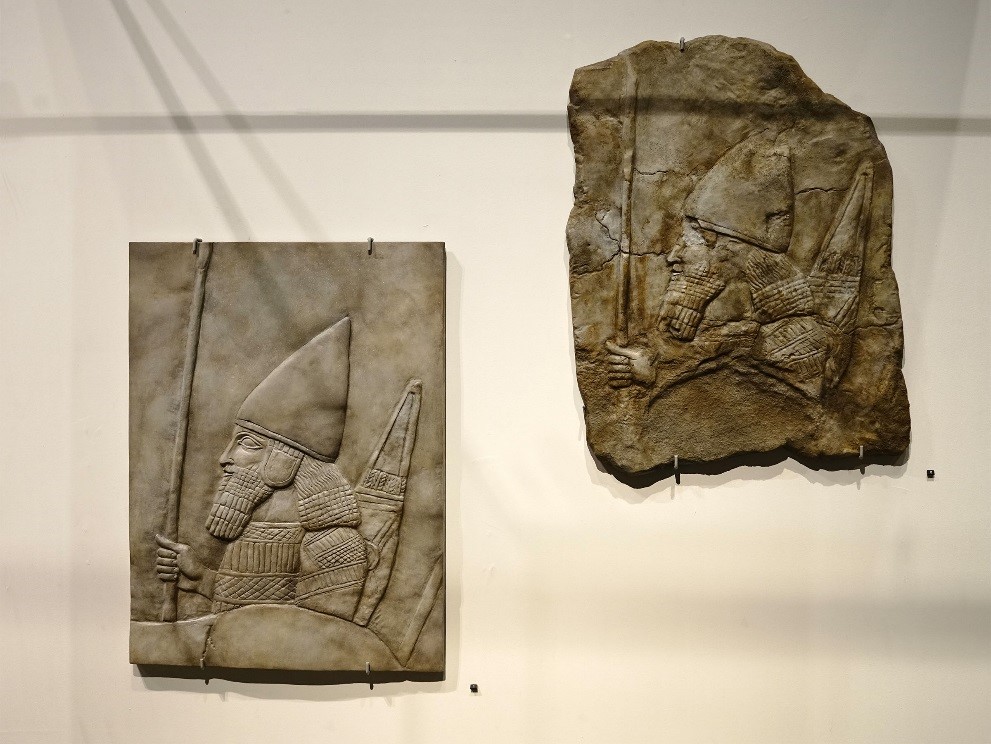 本学とデルフト工科大学との連携により再現されたレリーフの展示
本学とデルフト工科大学との連携により再現されたレリーフの展示
レセプションでは、イリナ・ボコヴァUNESCO事務局長のビデオレターに続き、イラクのFryad Rawanduzi文化・観光・古代省大臣とオランダのイェット・ビュッセマーケル教育・文化・科学省大臣が挨拶を行いました。続いて行われた内覧会では、両大臣をはじめとした多くのVIPが、東京藝術大学が出展したクローン文化財を鑑賞しました。
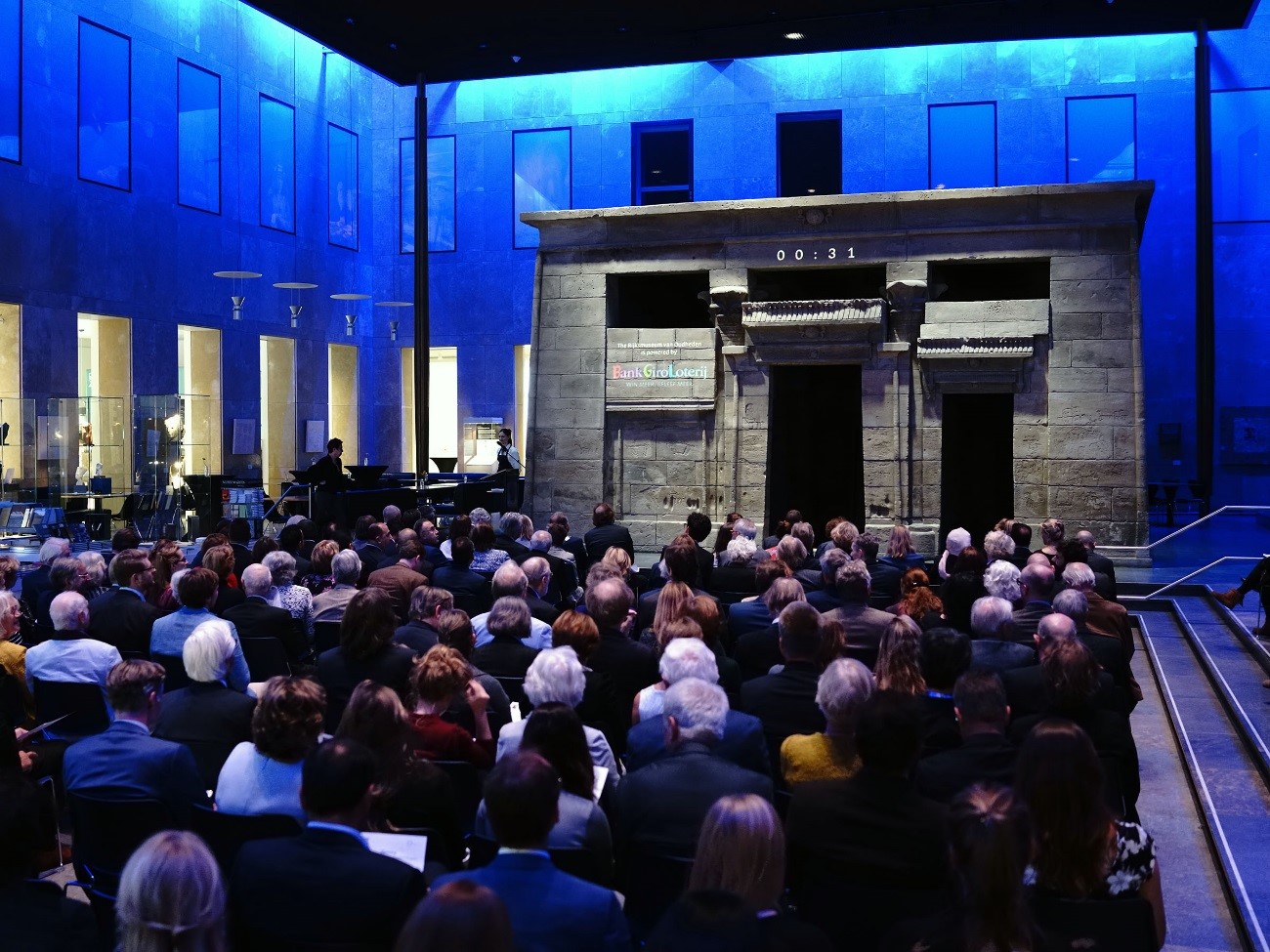 オープニングセレモニーのカウントダウン
オープニングセレモニーのカウントダウン
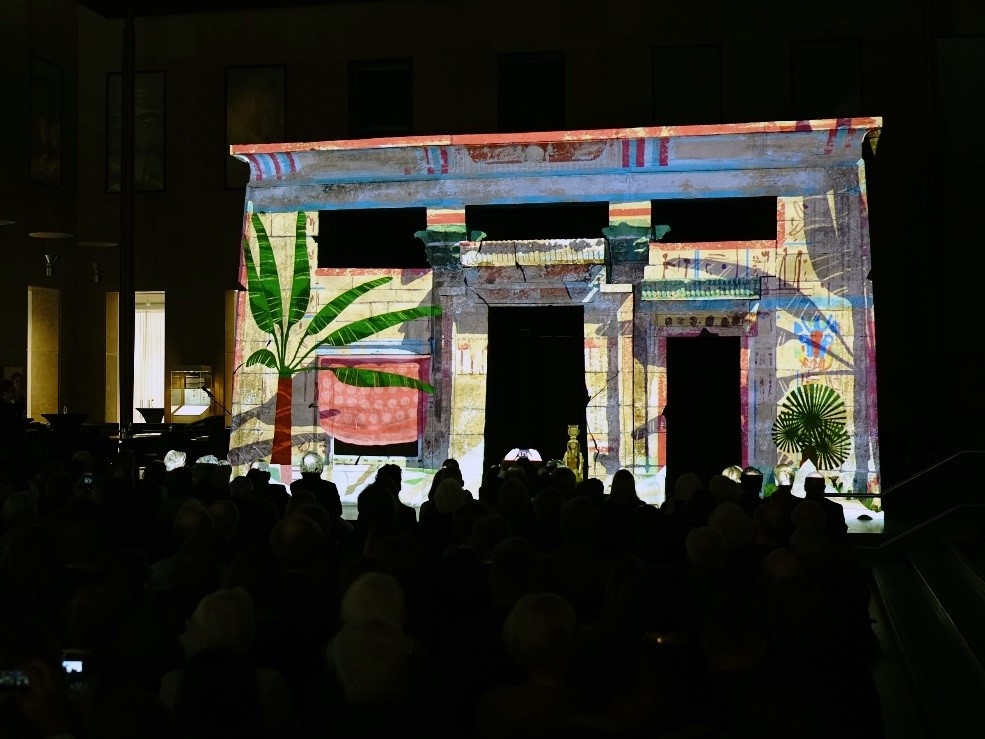 プロジェクションマッピングによるアッシリア帝国の宮殿の再現
プロジェクションマッピングによるアッシリア帝国の宮殿の再現
 イリナ・ボコヴァUNESCO事務局長による挨拶
イリナ・ボコヴァUNESCO事務局長による挨拶
本ニネヴェ展は3つのコンセプトが組み合わさっており、1つはニネヴェから発掘されたオリジナルの文化財、もう1つはニネヴェに触発されて後代に制作された美術品で、ニューヨークのメトロポリタン美術館、ロンドンの大英博物館、パリのルーブル美術館やバチカンなど、世界の有名博物館・美術館から第一級の文化財・美術品が集められました。3つ目のコンセプトは「復興」であり、破壊された文化財がさまざまな技術を使って復元され、オリジナルの文化財と共に展示されました。
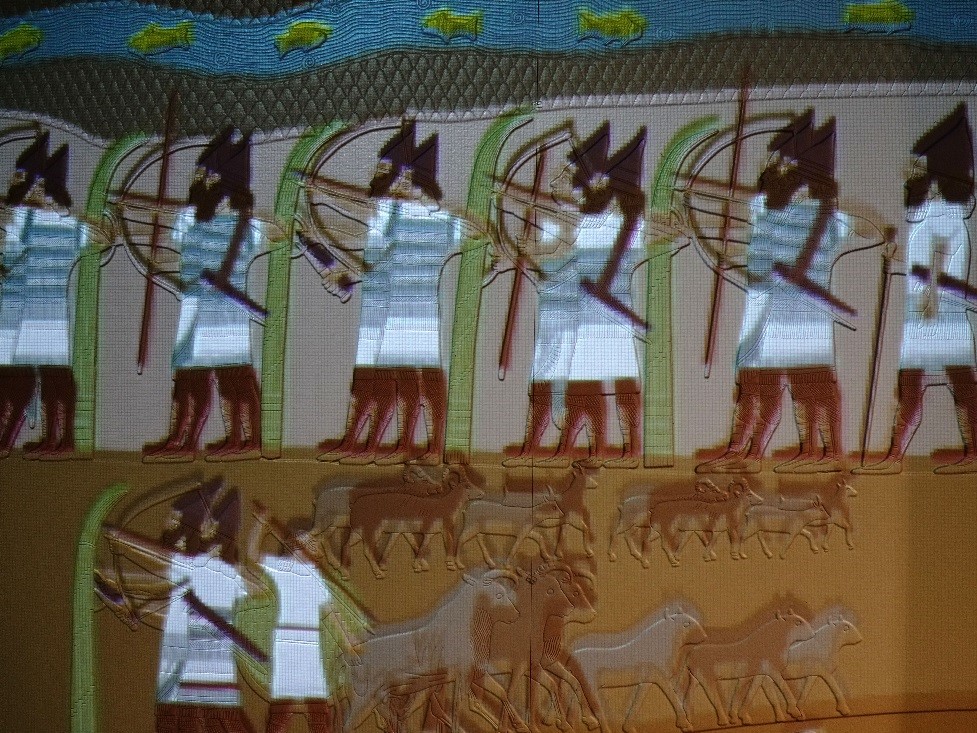 プロジェクションマッピングを活用した破壊されたレリーフの再現
プロジェクションマッピングを活用した破壊されたレリーフの再現
東京藝術大学が制作したクローン文化財は、3Dプリンタによる復元制作とは別次元の出来栄えであり、少なからずの鑑賞者がオリジナルと取り違えたくらいでした。また、当日の20時および21時に設けられた出展者によるプレゼンテーションセッションでは、通路が溢れるほどに聴講者が集まるなど、内覧会に集まった博物館・美術館関係者の注目の的となりました。
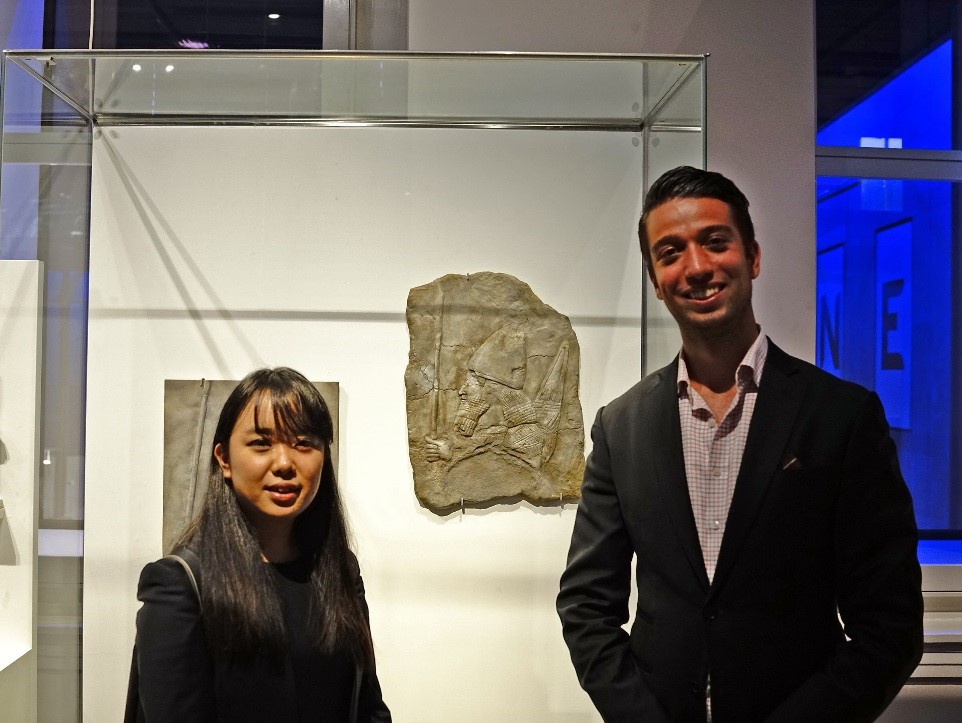
本学制作チームの大石特任研究員とデルフト工科大学で3Dデータ分析を担当したNaphur van Apeldoorn氏
The National Museum of Antiquities in Leiden, the Netherlands, is a prestigious museum with a long history. Commemorating its 200th anniversary in 2018, the museum is currently showing the exhibition “Nineveh” open from Oct 20, 2017 to March 25, 2018. Two representatives from Tokyo University of the Arts (Tokyo Geidai) were invited to attend the opening reception that took place on October 19, 2017.
Nineveh was the capital city of ancient Assyria, which existed in what is now in modern-day Iraq, and was the biggest city of that time. Major cultural properties from the ancient city were removed by research teams from Europe and the United States in the early 20th century, and those left in the original locations have been destroyed by the jihadist group Islamic State (IS), making the ruins that currently exist in Iraq almost empty. The exhibition Nineveh has been attracting the world’s attention as it is the first opportunity for such cultural properties that had dispersed all over the world to come together.
The exhibits in Nineveh include two reliefs reproduced as “clone cultural properties” by Tokyo Geidai in collaboration with the Delft University of Technology (TU Delft). The collaboration of the two universities is based on the partnership agreement between Tokyo Geidai and the Netherlands Institute for Conservation, Art and Science (NICAS), which was concluded on February 1, 2015, with the aim of combining technology and the arts. The reliefs are the outcomes of the second collaborative project, after the first project to reproduce an enlarged painting of the Tower of Babel, which was exhibited at “Collection of Museum Boijmans Van Beuningen Bruegel’s “The Tower of Babel” and Great 16th Century Masters”, an exhibition organized by The Asahi Shimbun.
 The relief reproduced by Tokyo Geidai collaborating with TU Delft
The relief reproduced by Tokyo Geidai collaborating with TU Delft
At the opening reception, following a video message from Irina Bokova, the Director-General of UNESCO, Iraqi Minister of Culture, Tourism and Antiquities Fryad Rawanduzi, and Dutch Minister of Education, Culture and Science Jet Bussemaker greeted the guests. During the private viewing that followed, a number of VIPs including the two ministers appreciated our “cloned reliefs”.
 Countdown for the opening reception
Countdown for the opening reception
 An old Assyrian palace reproduced using projection mapping
An old Assyrian palace reproduced using projection mapping
 UNESCO Director-General Irina Bokova gave a speech
UNESCO Director-General Irina Bokova gave a speech
This exhibition displays artworks that are categorized into three concepts. The first category includes original cultural properties that were excavated in Nineveh. The second category includes first-rate cultural assets and art works, which were produced at later times, with inspiration from Nineveh. They were collected from the world’s renowned museums such as the Metropolitan Museum of Art in New York, the British Museum in London, the Louvre in Paris, and the Vatican Museums in the Vatican City. The third category includes damaged or destroyed cultural properties that were reproduced using a variety of techniques, under the concept of reconstruction. They were displayed together with their originals.
 A destroyed relief reproduced using projection mapping
A destroyed relief reproduced using projection mapping
The cultural properties reproduced by Tokyo Geidai were so excellent that they gave added value to replicas made with a 3D printer, and many viewers believed them to be the original. At the presentation sessions by the exhibitors that took place at 8pm and 9pm, the Tokyo Geidai team introduced their works, which drew attention of guests from different museums. Their sessions attracted a large audience, causing an overflow of people from the room.


Project Researcher Yukino Oishi from the Tokyo Geidai team and Mr. Naphur van Apeldoorn who conducted 3D data analysis at TU Delft


